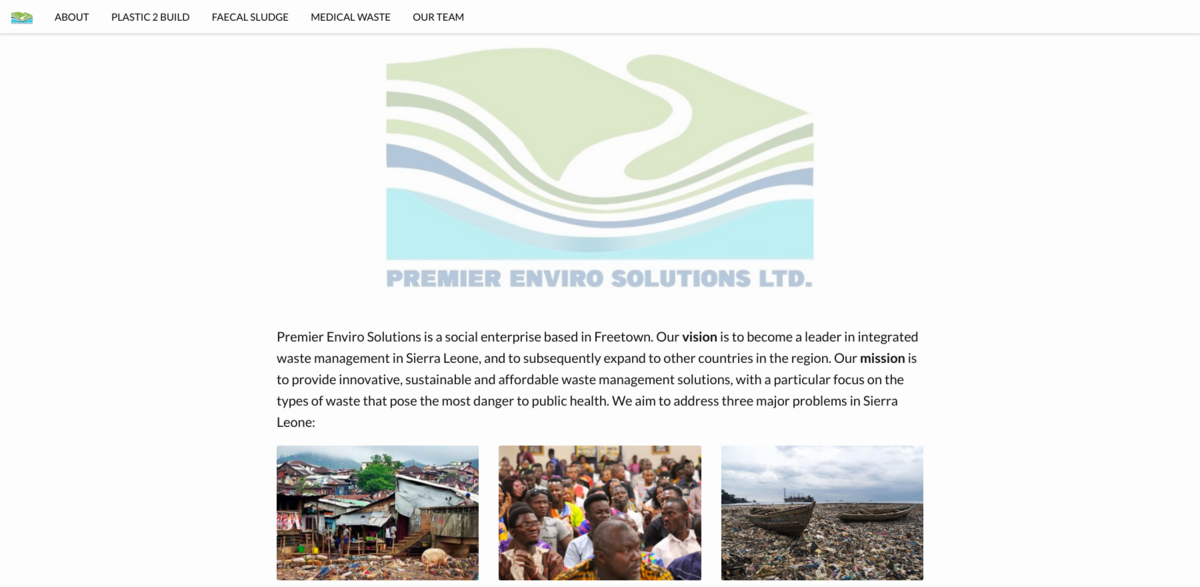What is Plastic 2 Build?
Plastic 2 Build (P2B) is the flagship project that’s formalizing the plastic recycling sector in a way that’s both innovative and impactful. It focuses on collecting plastic waste from the environment—yes, that plastic pollution that’s everywhere—by engaging lower-income individuals and communities. This approach not only tackles pollution but also creates jobs and wealth. The plastic collected is repurposed into affordable building materials aimed at low-cost housing. What’s more, the project aligns with eight Sustainable Development Goals (SDGs), follows circular economy principles, and promotes gender empowerment. It’s a fresh take on turning plastic waste into a valuable resource for communities that need it most.
Main Benefits of Plastic 2 Build
Here’s a quick snapshot of the key figures and facts that make Plastic 2 Build stand out:
- Freetown contributes 27,000 tons annually to plastic pollution, with 70 tons of plastic waste generated daily.
- Only 20 tons of that plastic waste reach legal dumpsites; the rest pollutes the environment, blocks waterways, and causes flooding.
- Plastic 2 Build aims to process 20 tons of plastic waste per day starting June 2024, scaling up to 50 tons/day by late 2025.
- The project will create jobs, with 50% of positions reserved for women, and provide skills training and tricycles for waste collectors.
- Building materials made from 100% local content will be 10%-30% cheaper than traditional cement blocks and tiles.
- These materials are nearly twice as strong in compression tests, prevent dampness, and keep homes cooler by blocking sun rays.
- Plastic 2 Build supports 60% of Freetown’s population living in slums by providing affordable, resilient housing options.
The Problem Plastic 2 Build Addresses
Plastic pollution is a huge challenge—plastic is part of everyday life, and it’s not going anywhere. By 2050, it’s predicted there will be more plastic by weight than fish in the oceans. Freetown alone adds 27,000 tons to this yearly plastic pollution. On top of that, about a billion people worldwide live in slums, with Freetown’s population being no exception—around a quarter live in unhealthy, undignified conditions. And then there’s youth unemployment: 90% of youths live in the global south, and in Freetown, 70,000 young people are unemployed. These problems are interconnected, and Plastic 2 Build aims to tackle them all at once.
How Plastic 2 Build Works
The project valorizes and classifies all types of plastic waste, treating it as a valuable resource rather than trash. The process blends plastic waste with sand, quarry stone, and crushed glass bottles (less than 6mm) to create building blocks, concrete pillars, and roof slabs—without using cement. This method is sustainable, energy-efficient, scalable, and modular, making it cheaper and more environmentally friendly than many other recycling projects. The facility, located next to the Kingtom dumpsite, will manufacture high-spec building materials from 100% local content, saving foreign exchange and potentially exporting the technology across the sub-region.
Project Development and Future Plans
Since securing a 15-year lease on land adjacent to the Kingtom dumpsite in January 2022, Plastic 2 Build has made significant strides. In July 2023, the Managing Director traveled to China to procure 60% of the manufacturing plant equipment, which arrived in late October 2023. The remaining equipment is expected by April 2024, with commissioning set for May and operations beginning in June 2024. Phase 1 will process 20 tons of plastic waste daily, while Phase 2, planned for the third quarter of 2025, will increase capacity to 50 tons per day and include a 200T/day Materials Recovery Facility (MRF) for municipal solid waste. This MRF will also generate 1 MW/hr of renewable electricity for in-house use, boosting production of blocks, pavement tiles, and roof tiles.
Impact of Plastic 2 Build on Sustainable Development Goals
- SDG 1: No Poverty – Creating jobs and wealth for low-income communities.
- SDG 5: Gender Equality – Ensuring 50% of jobs go to women and promoting empowerment.
- SDG 6: Clean Water and Sanitation – Reducing blocked waterways and flooding.
- SDG 8: Decent Work and Economic Growth – Providing employment and skills training.
- SDG 11: Sustainable Cities and Communities – Building affordable, resilient housing.
- SDG 12: Responsible Consumption and Production – Promoting circular economy principles.
- SDG 13: Climate Action – Reducing pollution and generating renewable energy.
- SDG 15: Life on Land – Preventing environmental degradation from plastic waste.
Why Plastic 2 Build Matters
Plastic 2 Build isn’t just about recycling plastic—it’s about transforming lives and communities. By creating a formal ecosystem for plastic waste collection and processing, the project saves municipalities millions in waste collection costs and reduces environmental damage. It improves air quality, extends the lifespan of dumpsites, and unclogs drainage systems, which helps prevent flooding. Cleaner beaches boost tourism, and affordable housing improves living conditions for thousands. Plus, the project’s business model is sustainable, with strong government support including tax holidays and duty-free importation of equipment. The technology and approach can be adopted beyond Sierra Leone, potentially benefiting over a billion people living in slums worldwide. It’s a win-win for the environment, the economy, and society.





















